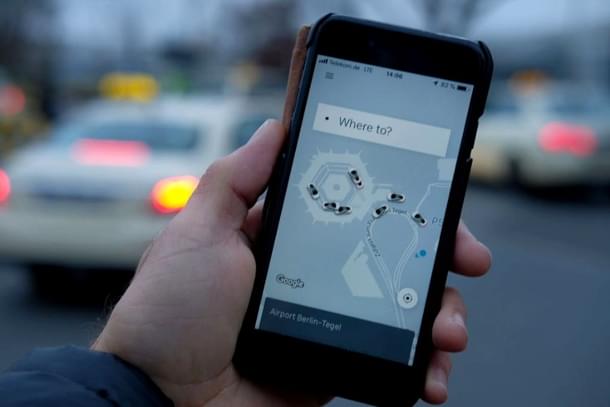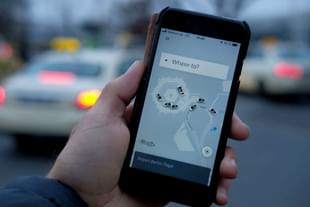Business
Is The Era Of Discounts Over?
Business Briefs
May 27, 2022, 04:25 PM | Updated 04:25 PM IST
Save & read from anywhere!
Bookmark stories for easy access on any device or the Swarajya app.


The rise of Indian start-ups over the latter half of the last decade unleashed a barrage of heavy discounting practices to attract consumers onto the platforms. Every start-up backed with investor money would offer steep discounts for the products or services sold on their platform. These weren’t illusory discounts where the marked price is increased, to falsely display a lower selling price. These discounts were genuine bargains that allowed customers to receive quality goods and services at unsustainable rates, subsidised by foreign capital.
Apps like Swiggy and Zomato became bargain hunting grounds for people living away from their families, as these apps offered discounts of up to 60 per cent.
Transactions on Paytm, Google Pay and other payment apps were made not for genuine money transfers, but to earn the rewards that came with new referrals and large transactions.
Apart from discounts, the focus on customer experience ensured that refunds were made with no questions asked, and complimentary coupons were given out in case of the slightest inconvenience.
Taxi rides that would have traditionally cost higher, now cost much lower due to regular discounts offered by Uber, Meru, TaxiForSure and Ola. In addition, these companies offered lucrative incentive schemes for driver-partners, restaurant partners, and delivery partners to join them.
Here, discounting served two main purposes – creating a habit for the customer and gaining market share from competitors. Heavy discounting removed any inhibitions a new customer might have to try out a new product due to economic concerns.
The underlying belief is that once customers are hooked to the services sold by the platform, most of them wouldn’t return back to their previous behaviour. Altering customer behaviour through discounting seems to have worked until now. Though loss-making, all listed digital companies have been reporting excellent operational metrics.
In an environment where the cost of capital went to near-zero levels, profitability wasn’t the main concern. The primary focus was directed towards undercutting the prices of the competitors through heavy discounting. Some platforms that could naturally have a winner-takes-all market would benefit from having more customers on the platform. Weaker competitors could be driven out by the sheer force of money until the market consolidated into duopolies or oligopolies.
The bust competitors were usually acquired by competitors in order to grow their footprint. Hence, growth and size were directly proportional to the company’s ability to burn cash. In 2015, Uber said that it wouldn’t rely on discounting or subsidies to grow in India, but it continued to do so for a while. Today the food delivery business is dominated by Zomato and Swiggy, while the mobility market is dominated by Ola and Uber. Smaller players have shut shop, and new players haven’t tried entering at a large scale yet.
But capital isn’t cheap today – forcing companies to cut down on costs, focus on cash flow, cut down on bloated structures and focus on survival. Several marquee investors have already asked their portfolio companies to prepare for a decline in funding. Clearly, growth cannot be bought by spending more money recklessly anymore.
As the focus shifts from growth and market share to generating positive cash flow, customer discounts and freebies are likely to see a cut over the coming months.
The consumption of high ticket items in the United States is already shrinking, as evident by the weak earnings reported by US retailers. The data from the US retailers showed that the share of higher ticket price discretionary purchases has declined. With inflation already pinching consumers, the lack of discounting by tech start-ups could result in a decline in spending by Indian consumers on tech-enabled services/products. These companies haven’t been tested in a high inflation environment where consumers usually cut down on discretionary purchases.
But the future might not completely dark. According to Rakuten Intelligence, the cost of a ride on a ride-sharing app went up 92 per cent between January 2018 and July 2021. Yet, monthly active platform consumers grew from 70 million to upwards of 90 million during the period.
While it could indicate that users have formed a habit and are ready to pay up for the service, one should note that transportation is a necessity. In addition, it wasn’t an inflationary environment, while cost-push inflation is rampant today. Despite the growth in scale, Uber is yet to achieve profitability, which could indicate that breakeven fares could be much higher from here.
It is possible that Indian customers addicted to heavy discounting practices will start showing withdrawal symptoms as soon as discounts are reduced. As both inflation and un-subsidised prices hit consumers, it is quite likely that the consumption on these digital platforms would reduce over the coming quarters. The usual strategy of throwing money at every problem isn’t feasible, and only businesses with a solid model are likely to survive.





